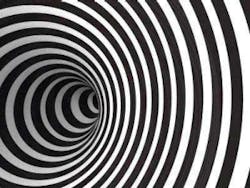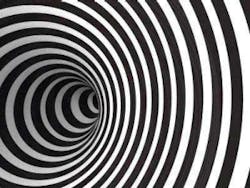Engineering, work practice, and administrative controls elements for safety
By Leslie Canham, CDA, RDAEngineering controls isolate or remove the blood-borne pathogen hazard from the workplace. Work practice controls reduce the likelihood of exposure by altering the manner in which a task is performed. Administrative controls include education, training, and application of Standard Operating Procedures for preventing occupational exposure to blood and other potentially infectious fluids. A previous Dental Assisting Digest™ article titled “You Can Conduct OSHA Training” listed the elements of annual blood-borne pathogen training. This article will focus on item No. 6 of the 14 elements, and will explore each type of control to help you establish protocols for office safety and OSHA compliance. Here are the 14 elements of the blood-borne pathogen training program: 1. A written copy and explanation of the Bloodborne Standard. (The standard is usually located in your OSHA manual. If not, you can get a copy from the federal OSHA Web site at www.osha.gov or check your state OSHA Web site.) 2. A general explanation of the epidemiology and symptoms of blood-borne diseases. 3. An explanation of the modes of transmission of blood-borne pathogens. 4. An explanation of the employer's exposure control plan and how the employee can obtain a copy of the written plan.5. An explanation of the appropriate methods for recognizing tasks and other activities that may involve exposure to blood and Other Potentially Infectious Material (OPIM).6. An explanation of the use and limitations of methods that will prevent or reduce exposure, including appropriate engineering controls, administrative or work practice controls, and personal protective equipment. 7. Information on the types, proper use, location, removal, handling, decontamination, and disposal of Personal Protective Equipment (PPE).8. An explanation of the basis for selection of PPE. 9. Information on the hepatitis B vaccine, including information on its efficacy, safety, method of administration, the benefits of being vaccinated, and that the vaccination will be offered free of charge. 10. Information on the appropriate actions to take and persons to contact in anemergency involving blood or OPIM.11. An explanation of the procedure to follow if an exposure incident occurs, including the method of reporting the incident, the medical follow-up that will be made available, and the procedure for recording the incident on the Sharps Injury Log if sharps are involved.12. Information on the post-exposure evaluation and follow-up that the employer is required to provide for the employee following an exposure incident.13. An explanation of the signs and labels or color-coding to communicate hazards to employees.14. An opportunity for interactive questions and answers with the person conducting the training session.
Engineering controlsEngineering Controls include devices such as sharps disposal containers, syringes that do not need to be recapped, sharps with engineered sharps injury protection, and needle recapping devices. The Needlestick Safety and Prevention Act became law in 2000. It requires dental practices to evaluate and select safer sharps devices as they become available. It also requires that the evaluation be conducted annually, and that employers solicit input from non-managerial staff (the clinical team). Then the documentation must show the decision to use or not use the devices. (Details on how to obtain a complementary copy of a sharps evaluation form is provided at the end of this article). Work practice controls Work Practice Controls reduce the chance of exposure by altering the manner in which a task is performed. An example of a common work practice control is to recap a needle with a “one-handed scoop” technique. OSHA prohibits recapping needles by holding the cap in one hand and the sharp in the other. Other work practice controls include using instruments instead of fingers to retract tissue during suturing or injections, announcing instrument passes, and keeping sharp ends pointed away from dental workers. Administrative controls Administrative Controls include education, training, and written plans to help dental professionals understand how to avoid accidental exposure to blood and body fluid. OSHA annual bloodborne pathogen training and ongoing infection-control education are essential to office safety. The office’s written exposure control plan can serve as the Standard Operating Procedures for preventing occupational exposures. All clinical employees should review these written plans at least annually. ConclusionCreating a culture of safety at work includes team evaluation of available engineering controls, review of work practice controls, and providing administrative controls. You can promote safety by having periodic training sessions on how to handle and dispose of sharps safely. You can also meet OSHA’s requirement to evaluate safer sharps by obtaining samples of engineered sharps with sharps injury protection from your dental supplier, and use the author’s complementary evaluation form to document your findings. To receive a copy of the sharps evaluation form, send an e-mail request to [email protected]. Author bioLeslie Canham is a dental speaker and consultant specializing in infection control and OSHA compliance. She has more than 36 years of experience in dentistry. Canham is the founder of Leslie Canham Seminars, providing in-office training, mock inspections, consulting, and online seminars and webinars to help the dental team navigate state and federal regulations. Reach Canham at (888) 853-7543 or Leslie Canham.

